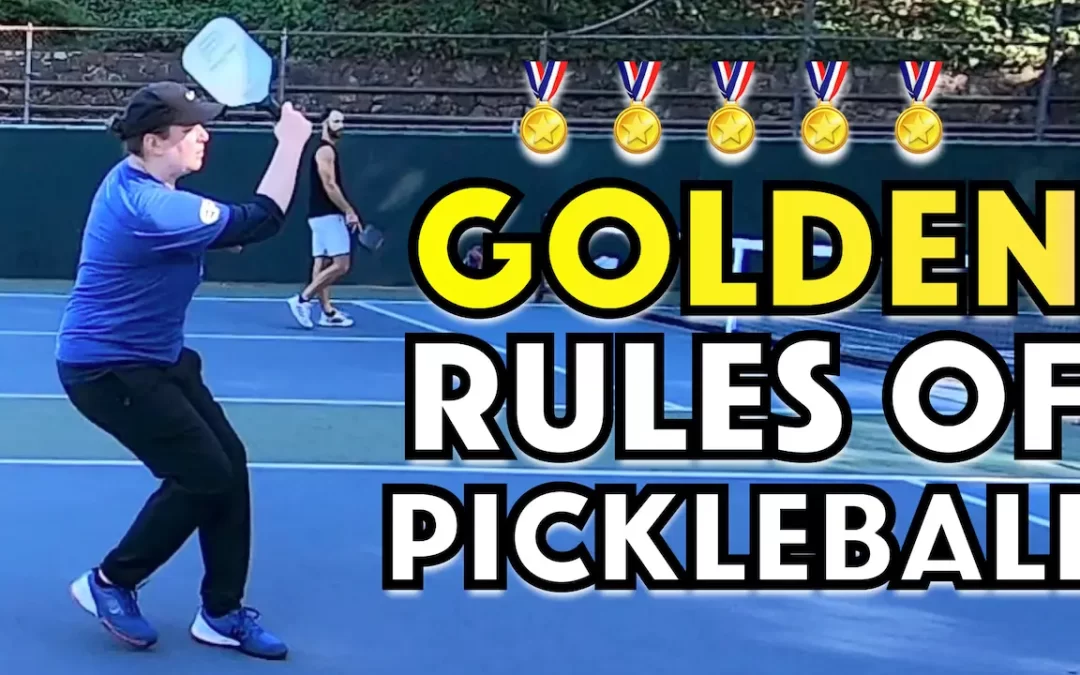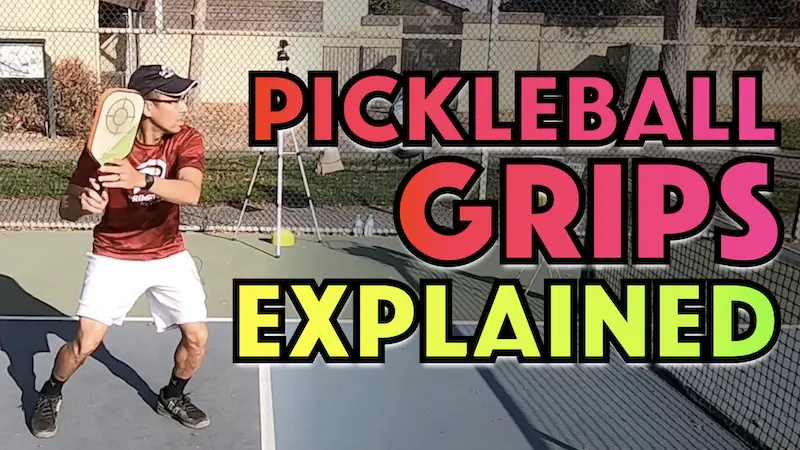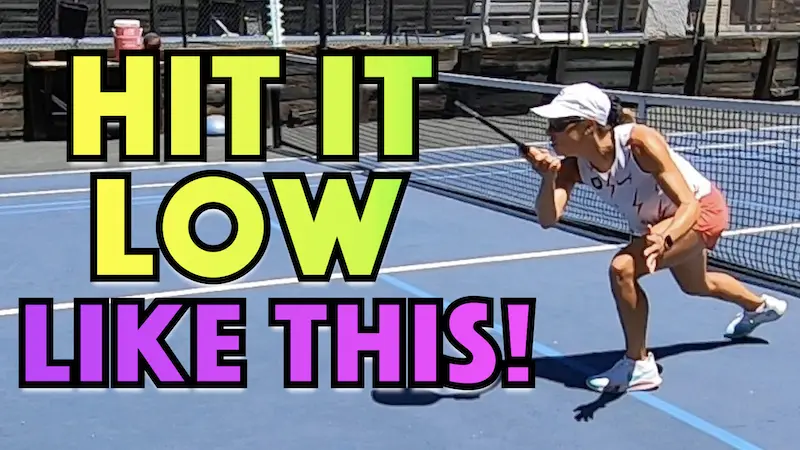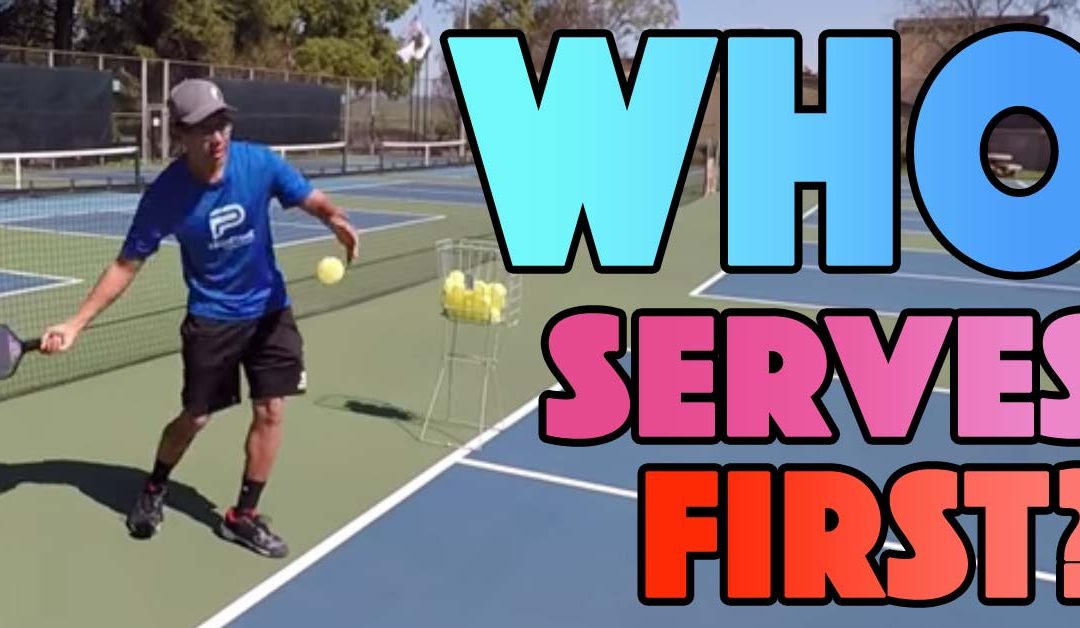Knowing the rules is crucial for pickleball beginners so that they can avoid faults and become better players.
So, what are faults in pickleball and how can you avoid them?
Pickleball, like any set of rule, has a governing body that puts out the rules of the game. In this case, the governing body is USA Pickleball. Anything that breaks the regulations as they have set out is a fault.
There are many ways to cause a rule violation. The most frequent ones are; striking the ball out of bounds or in to the net, volleying the serve return, and making a foot fault in the non-volley zone.
4 Common Pickleball Faults To Avoid for a Winning Strategy
The 4 most common faults are forgetting about the two-bounce rule, hitting balls out of bounds, foot faults, and service faults.
Let’s look at each one:
1. The Two-Bounce Rule
This rule can trip you up if you’ve played lots of tennis as one will automatically rush forward after the serve and try to smash the ball for a winner if it floats up high.
The serve and return of serve must both bounce before being struck according to the double bounce rule.
Once the two-bounce rule is satisfied, any player can strike the ball out of the air on subsequent shots in that point. This means that the returning team is always the team that has the first opportunity to hit the ball out of the air.
2. Hitting Balls Out Of Bounds
If you exclude the service, all other balls are considered to be “in” if they land on the sideline, baseline, centerline, or non-volley zone line and anywhere on or inside the lines of the pickleball court.
On your service, the ball must land on the appropriate side of the court (diagonal from the server) and on or inside any of the lines except for the non-volley zone line, for it to be judged “in”.
The ball cannot land inside the non-volley zone or “kitchen” on the service either.
3. Foot Faults
Foot faults fall into two categories, either while you are serving at the baseline or when you are playing shots at the non-volley zone line.
There are two ways pickleball players can foot fault in pickleball.
Stepping on or over the service line during a serve is counted as a fault. You must first make contact with the ball before you can step on the line or in the court. Also you cannot laterally cross the imaginary lines that would be an extension of the center line or the sideline when you are serving.
The occurs at the non-volley zone line. If you step on the line or inside the non-volley zone during a volley or after a volley where you were carried in to it by your momentum from the shot then that is a foot fault.
4. Service Faults
There are 3 key rules on the serve when you use a traditional toss (hitting it out of the air after it’s released from your hand):
- You must use a low to high swing motion
- You must make contact with the ball below your waist.
- You wrist must be above the height of the ball at contact
If you use a drop serve then you can ignore the above 3 rules.
Committing a Fault | Common Causes
You might feel a little overwhelmed by all of the pickleball regulations, especially after seeing the most common ones above. But, it’s really not that hard, you just need to get the hang of it and it will come quickly when you start playing so don’t worry!
But while you’re still learning the game, focus on avoiding these common causes of faults during a match and you’ll go far:
- You serve the ball so that it lands outside the boundaries of the receiving court.
- When you return a serve, the ball strikes the net and doesn’t ever go onto your opponent’s side.
- Before each team allows the ball to bounce after it is served, the ball is volleyed.
- You send the ball out of bounds or in the net at anytime during the point.
- The ball is volleyed from within the non-volley zone.
- The ball bounces twice on the same side before contact is made by a player on that side.
In each of these common errors, a fault is called, and play moves on to the next point.
Additional faults include:
- If you permit yourself or anything attached to you—like a paddle or your clothing—to contact the net when the ball is in play.
- When the ball bounces off of an immovable obstacle (such as a lamp post or tree) before touching the ground.
- If a player reaches over the net to strike a ball before it has crossed the plane of the net onto their side.
A Deeper Dive On Faults in Pickleball
In addition to the common faults above, pickleball also has misconceptions that are specifically tied to these faults.
Kitchen Foot Faults Misconceptions
- Your paddle and any accessories you are wearing are considered to be an extension of you. When anything you are wearing or touching in any way touches the NVZ line or in the NVZ during a volley then it’s a fault, even though you may not have stepped in it.
- You do not have to wait for the ball to bounce in the NVZ in order to step in and hit it. You can step in at anytime as long as you do let the ball bounce before you make contact with it.
- If your partner is able to grab you in time and pull you back, preventing your momentum from carrying you into the kitchen, that is allowed.
- If you pushed off the court to head back for an overhead and your foot touches the NVZ or the NVZ line as you push off, and you make contact with the overhead before that foot has reestablished itself by touching a portion of the court behind the NVZ line, then that is a fault.
It is easy to get carried away and lose track of where you are standing and inadvertently volley the ball while standing in the non-volley zone or on the non-volley zone line.
Players are also often carried into the non-volley zone by their momentum if they rush forward to hit a volley close to the kitchen.
Don’t worry, even the very best players lose track of their feet sometimes.
Serve Foot Faults & Other Serve Faults
Your foot location as you prepare to serve is closely tied to the ultimate type of error.
These positional errors can include the following:
- Your feet come into contact with anything beyond the sideline plane.
- Your feet stray from the plane’s center.
- Any part of the court is touched by your foot.
You will also incur a fault if any of these things happen during your service:
- If you attempt to serve and it is unsuccessful, with the ball dropping to the ground.
- You allow the ball to make contact with the partner or any of their clothing.
- If you serve the ball and it hits the net and lands on the kitchen lines or in the kitchen.
- If you serve the ball and it lands outside the service zone (on the wrong side of the center line, for instance).
- If your ball strikes any sturdy structure before serving, such as a wall, fence, lamp post, or tree.
What Is a Dead Ball In Pickleball?
A dead ball results from any action that halts play. This may happen when a player commits a fault, whether it is called by the referee, another player, or not called at all.
When the first error is committed, the pickleball will then be referred to as a dead ball because it is no longer in play.
Calling A Fault In Pickleball
If you are playing in a league match or tournament, then you’ll have a referee who will determine whether a fault has been committed and they then make the call.
For recreational play, the USAPA rulebook is amended annually to provide clarity on when and how a fault should be called in the absence of a referee.
And just so that you know, when referring to non-volley zone faults or “kitchen” faults, the zone only refers to the surface of the area inside the non-volley zone, including the lines, and does not include the airspace above the ground.
You have to actually touch the line or area inside the line for a fault to occur.
Line calls are the responsibility of the player hitting the ball, while kitchen faults can be called by your opponents as well. There is a distinction in the rule book between line calls and foot faults.
However, when the call is disputed, it is the player or team who called the fault who has priority.
Strategies To Avoid Committing Faults
The first step in avoiding committing faults is to know the rules of pickleball and familiarize yourself with the most common errors that are made by beginners.
The next way you can avoid faults is to take time out to practice regularly. This ensures that you have a better understanding of where you are on the court and prevents you from getting caught in a situation that will result in an error.
Service faults are most common when players first start playing and you can avoid these by practicing with a more experienced player who can help you iron out any difficulties you may be experiencing.
The next area of your game that results in faults is in and around the kitchen. Apart from practicing how to approach and return shots in this area, it helps to practice staying out of this zone when initiating volleys.
Final Thoughts
Minimizing faults will help you improve your game and enjoyment levels immensely.
You can do this by becoming familiar with all the rules and putting in the time to practice ahead of your games.
To find information on how you can improve your pickleball game, check out these pickleball drills.
Related Questions
What happens when you fault in pickleball?
If you or your team was serving then the serve either goes to the second server on that team or a side out occurs and the other team or player now serves. If you or your team was returning then the other team scores a point and the player that was serving switches sides and continues serving.
Who can call a fault in pickleball?
Non-volley zone faults may be reported by any player on either side during play without a referee, as referred to in Section 9i of the rules. The player who makes the call is granted the benefit of the doubt. All other faults are called by the player or team who commits the fault.
What happens if your opponent disagrees with your fault call?
Section 13.D.1.b of the rule book states that a replay must take place if there is any dispute among the players over the called fault.






